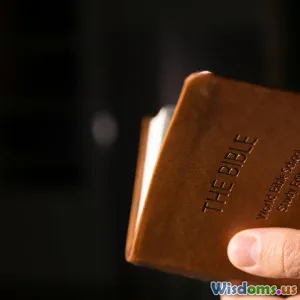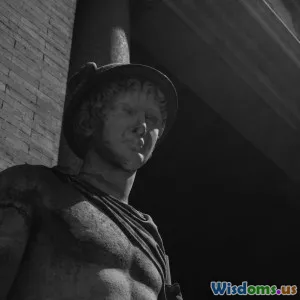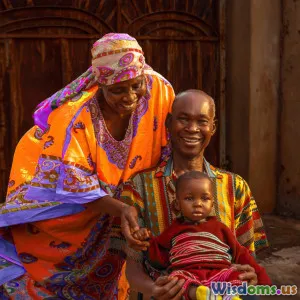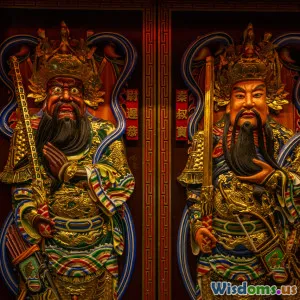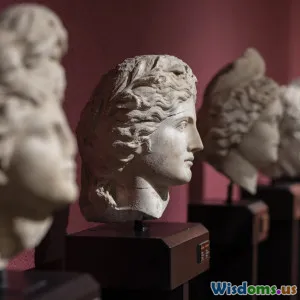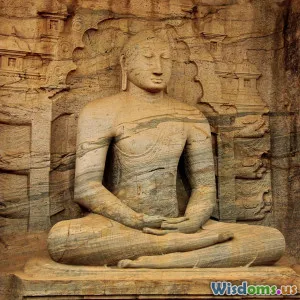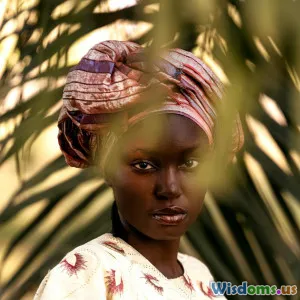
Exploring the Role of Tricksters in African Folklore
8 min read Delve into the dynamic world of African tricksters and their powerful role in folklore and culture. (0 Reviews)
Exploring the Role of Tricksters in African Folklore
Introduction
Among the vibrant traditions of African storytelling, the figure of the trickster stands out as both a cunning shapeshifter and a deep cultural symbol. Tricksters are characters who use wit, deception, and humor to influence the world around them, often bending rules and expectations in ways that challenge societal norms. From Anansi the spider in West Africa to Eshu the Yoruba deity, these figures are universal symbols steeped in complex meanings, embodying contradictions that reveal profound truths about human nature and social order.
This article explores the multifaceted roles tricksters play in African folklore, examining specific examples, their cultural significance, and how they continue to inspire contemporary art and thought.
The Trickster Archetype in African Folklore
Who Are the Tricksters?
Tricksters in African folklore take various forms but share common traits: intelligence, resourcefulness, and a willingness to flout the rules. Unlike villains, they often act out of necessity or for survival, embodying both chaos and creativity. They serve as mediators between worlds—the divine and the mortal, the natural and the supernatural—while also functioning as mirrors reflecting societal flaws and virtues.
One quintessential example is Anansi, the spider, a central figure in West African and Caribbean folklore. Anansi’s tales often emphasize cleverness over brute strength, portraying him as a hero who outsmarts stronger opponents using his mind.
Key Characteristics
- Subversion of Authority: Tricksters challenge established power, questioning traditional authority figures.
- Dual Ambiguity: They embody both good and bad qualities, representing life's dualities.
- Cultural Transformers: They often instigate change, bringing knowledge, technology, or new cultural practices to humans.
Cultural and Social Functions of Trickster Tales
Teaching and Moral Lessons
Contrary to inducing mere entertainment, trickster stories have long served pedagogical purposes. By showcasing the consequences of deceit, greed, and selfishness—or alternatively, rewarding cleverness and adaptability—these narratives teach vital social and ethical lessons.
For instance, in the tales of Eshu, the Yoruba trickster god, stories emphasize the importance of communication and balance in society. Eshu’s unpredictable behavior teaches that life is full of uncertainties and one must navigate with flexibility and wisdom.
Explaining Natural Phenomena and Human Behavior
Trickster stories also serve as explanations for natural events or human behaviors. In some African communities, tales involving tricksters justify why the moon waxes and wanes or why certain animals behave in peculiar ways. These narratives connect people to their environment, preserving ecological knowledge.
A Space for Social Criticism
Because tricksters play with boundaries, their tales create a safe narrative space to critique authority and social norms without direct confrontation. This indirect mode of criticism allows communities to reflect on governance, justice, and cultural practices.
For example, in the San people's folklore of southern Africa, trickster tales use humor and irony to expose hypocrisy among leaders and elders, encouraging communal introspection.
Notable Tricksters Across African Regions
Anansi – The Spider (West Africa)
Anansi's stories span from Ghana to Jamaica, reflecting the African diaspora's historical experiences. Often portrayed as a spider or a man-spider hybrid, Anansi’s adaptability symbolizes survival amidst adversity. Notably, the "Anansi and the Pot of Wisdom" story illustrates how wisdom, though hoarded selfishly, ultimately becomes communal knowledge through Anansi’s mishaps.
Eshu (Yoruba, Nigeria)
Eshu is a complex deity, a messenger of the gods, known for his unpredictability. He often appears in stories as a mediator of fortune and misfortune, embodying the unpredictable nature of life. Folklore describes Eshu’s role as one who safeguards cosmic balance, emphasizing that neither order nor chaos can prevail fully without the other.
Ikenga (Igbo, Nigeria)
Though more associated with strength and achievement, some Ikenga stories contain trickster elements that highlight human ingenuity and cunning, showing that success often involves outthinking rivals.
Kweku Anansi in Caribbean Folklore
As a testament to cultural resilience, Anansi tales traveled with enslaved Africans to the Americas, evolving yet maintaining roots in African oral traditions. These stories helped enslaved people preserve identity and find hope through wit and storytelling.
Tricksters in Contemporary African Culture
Literature and Film
Modern African writers and filmmakers have revived trickster archetypes as vehicles to explore postcolonial identity, politics, and social change. Chinua Achebe’s literature, for example, often alludes to trickster motifs to interrogate colonial legacies and indigenous wisdom.
The Nigerian film industry (Nollywood) similarly adapts trickster narratives to contemporary settings, blending humor with moral inquiry.
Psychological and Social Insights
Tricksters provide valuable insights into the complexities of human psychology, representing adaptive strategies that resonate with modern audiences dealing with ambiguity, change, and moral dilemmas.
Preservation of Oral Heritage
As African societies increasingly embrace digital platforms, trickster stories are finding new life through podcasts, digital storytelling, and social media, helping young generations connect with their heritage in innovative ways.
Conclusion
The role of tricksters in African folklore is neither simplistic nor fixed. These entities are pivotal in reflecting cultural values, teaching lessons, challenging power, and preserving history through narrative. Far from just clever figures of mischief, African tricksters are profound symbols embodying the interplay of order and chaos, wisdom and folly.
Understanding the trickster tradition enriches appreciation of African cultures’ depth and diversity. It invites readers to reconsider the power of stories to shape human experience, fostering a connection across time, geography, and culture.
In a world often divided by rigid definitions of right and wrong, tricksters remind us of the value of flexibility, creativity, and the enduring relevance of laughter and insight. Their tales not only entertain but empower, continuing to inspire and challenge audiences globally.
References:
- Abrahams, Roger D., African Folktales in the New World.
- Bascom, William R., Four Functions of Folklore.
- Finnegan, Ruth, Oral Literature in Africa.
- Oladele, Gabriel. "The Trickster and Moral Lessons in African Folklore", Journal of African Cultural Studies, 2022.
- Ogude, James, Myth, Ritual and Kingship in Buganda.
For those eager to dive deeper, exploring traditional folktales through collections or engaging with community storytellers remains the best gateway into the world of African tricksters.
Rate the Post
User Reviews
Popular Posts













